We are trying to play a game from which we will benefit – we are looking to keep a balance. We have players who struggle a bit more when defending, so it’s normal for us to try to take the game to our opponents and keep the ball in the opposition’s half of the pitch.
Luciano Spalletti, Inter Milan head coach, speaking after a 0-0 draw with Udinese, 4 March 2019.
Luciano Spalletti had probably described it better than anyone else could have. He wants his Inter side to be “perfectly balanced, as all things should be”. In this tactical analysis, we shall examine how Inter have developed a structural cube, or “tesseract”, in the middle of their 4-2-3-1. This tesseract has seen a rapid decline in their xGA (expected goals against) since the start of April. An analysis of their recent consistency in shape will demonstrate how this formation has taken hold. Furthermore, through using their two Serie A fixtures against xG demons Atalanta as case studies, we shall test its significance and witness its modifications.

Thor-two-three-one
Spalletti is widely known for his preference for aggressive possession play. The style which his Inter side use harkens back to his days at AS Roma, who were incredibly successful under him. By far this season, his favourite formation has been the 4-2-3-1. He’s used this set-up almost 63% of the time in Serie A. This shape offers adequate balance across the field.
It could be argued that Inter’s near abandonment of the 4-3-3, which Spalletti had previously used in earnest, has contributed to a decreased xGA. Inter have deployed the 4-3-3 in around 29% of their Serie A games this season. Interestingly, they haven’t used this formation since the 3-2 victory over city rivals AC Milan, however.
The 4-2-3-1 provides impeccable balance for Inter’s team and this is noticeable in practice. According to understat.com, this season, I Nerazzurri have recorded their highest xGA (6.67xGA) within the period midway in the second half. In the game which started this excellent run of form, against Genoa at the start of April, Inter were markedly strong in this period.
Although Genoa had lost a man to an early red card, Inter’s strong spell of possession meant that the home side rarely threatened. Whilst Spalletti’s men rarely gave the ball away, even when defending, they snuffed out Genoa attacks with ease. Inter’s centre midfielders were crucial to this. An almost telepathic square of understanding buttressed Inter’s central column. This comfortably isolated Christian Kouamé, as well as provided the perfect starting point to launch measured attacks.
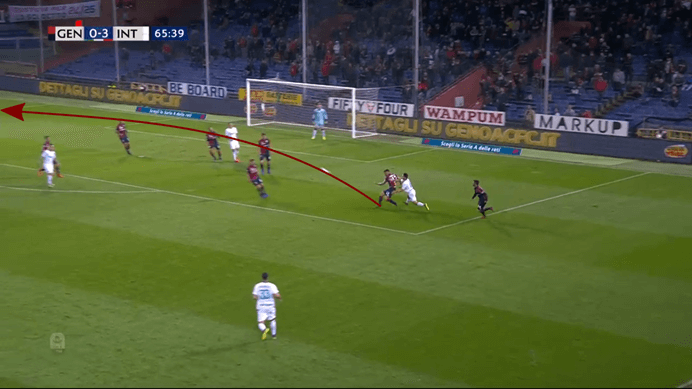
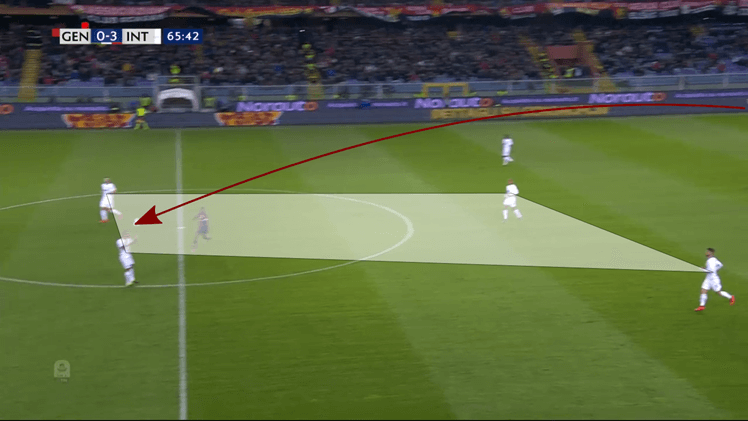
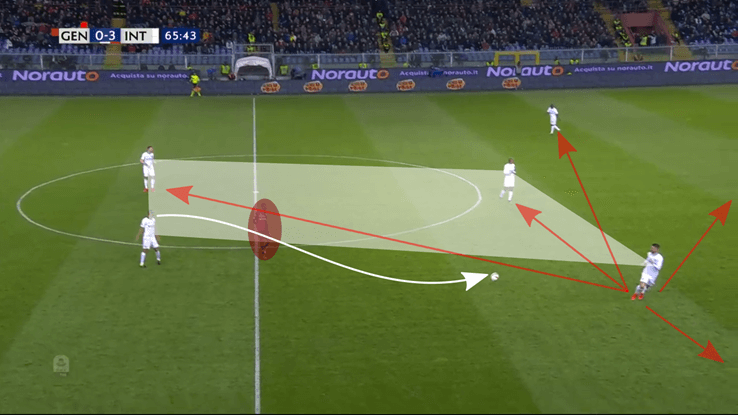
Atalanta: Alejandro Gómez and Josip Iličić exploit the “infinity zones”
In their first league match against Atalanta in November, Inter opted for the 4-3-3. Against Gasperini’s side, this proved self-defeating.
Atalanta have an xG of 69.07, with a deficit of only -1.93. What this means, is that Atalanta are just a purely effective attacking side. Juventus, the Serie A champions, for example, sit 4th in the xG table. Juventus’ xG is 62.11, they have an xG deficit of -6.89. In other words, Atalanta have been more prolific, but with much less fortune.
La Dea played the part of overbearing hostess with incredible success. At their most potent in the game, Atalanta recorded an xG of 4.13. In contrast, Inter whimpered to just 1.32xG. A tactical analysis of Atalanta’s control will show us how Inter’s hubris cost them at this crucial stage of the season.
Just before half time, Atalanta were rampant. In this instance, we can see how inflexible the 4-3-3 became for Inter. Alejandro Darío Gómez and Josip Iličić were afforded too much space between the lines. Iličić and Gómez tallied 77 and 69 touches each, and 56 and 60 passes respectively. Their overloading of the central column made them the most available players on the pitch.
Attempts to cover the Atalanta-saturated space by Inter’s sole central midfielder, Marcelo Brozović, were in vain. Not just in vain, Inter’s desperation led to criminality. Gómez’ movement drew out Milan Škriniar, who was rightly booked. This is seen below. Unsurprisingly, just prior to the final whistle, Brozović enjoyed an early bath. He had received a second yellow for an over-the-ball foul on Iličić.
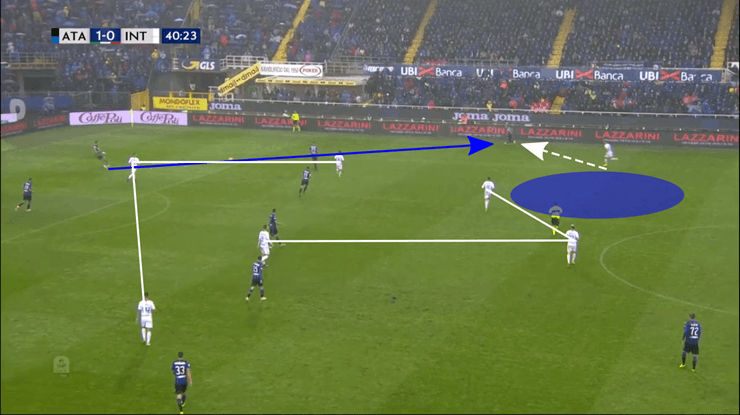
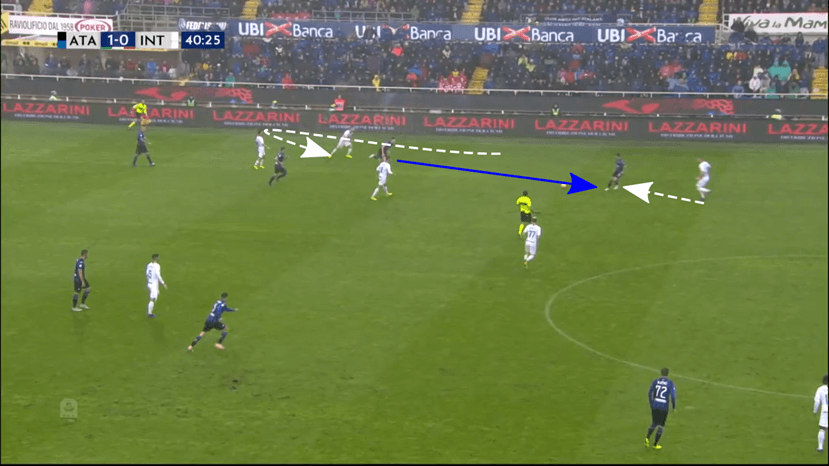
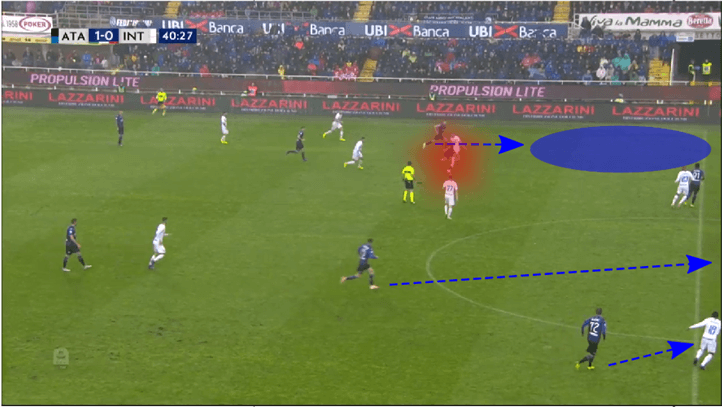
Atalanta: End game
Although they didn’t claim a victory, in the 0-0 home draw against Atalanta in April, Inter put up a much better display. Inter were not necessarily more comfortable, but they were much better prepared at the San Siro. Their recent defensive form continued and this can be largely put down to the implementation of the transitional shape seen against Genoa.
Both sides had excellent chances to win the game, and it would be incorrect to say that each side were defensively resolute. Pierluigi Gollini, the Atalanta goalkeeper, made four saves (to Samir Handanović’s zero), yet the momentum to win arguably lay with his side. The away side led the xG score line 1.23-0.94. Atalanta still looked more dangerous in front of goal, but Inter had drastically improved.
As the game drew on, Inter grounded themselves well. Here, we saw Inter offer a tailor-made structural shape which kept Atalanta at bay and maintained attacking momentum. Roberto Gagliardini was substituted midway through the second half. His replacement, the experienced Spaniard Borja Valero, demonstrated evidence of this transitional tesseract, albeit, with modifications.
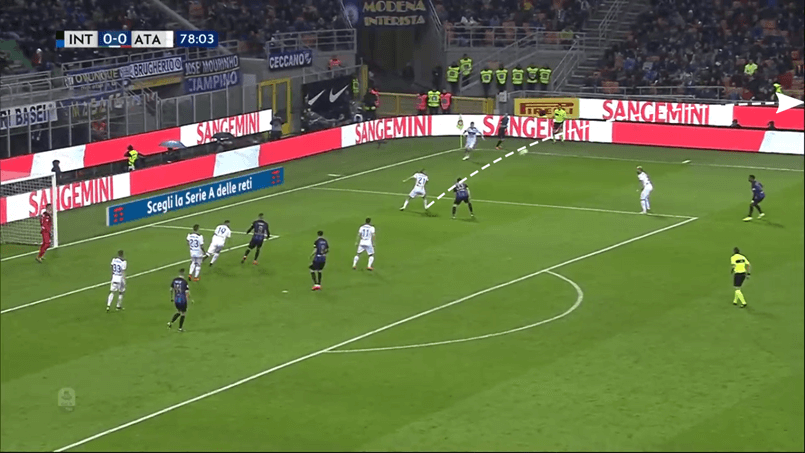
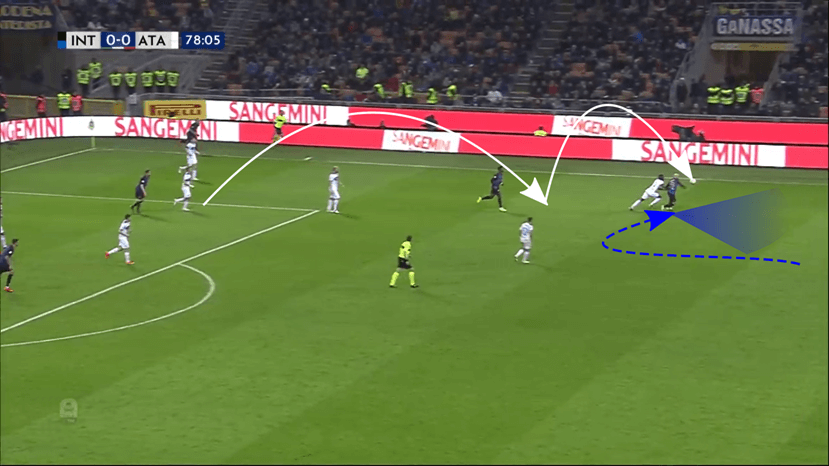
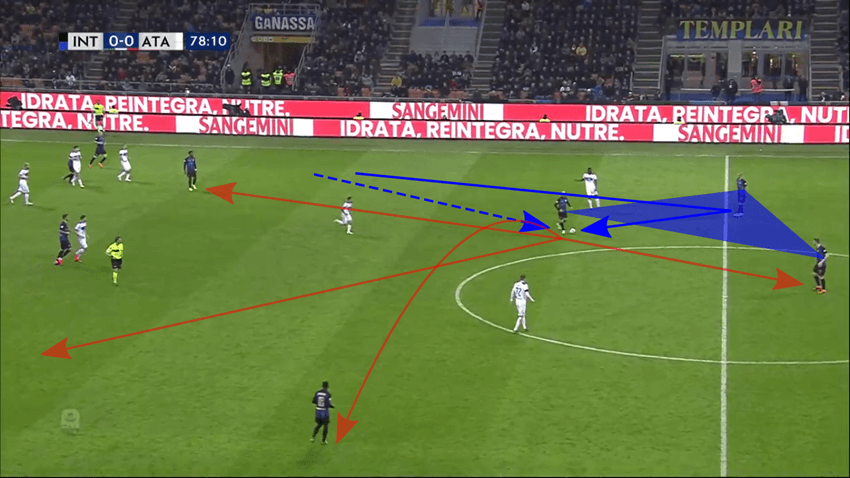
Valero’s defensive mastery allowed his fellow midfielders to push further up the field. Inter could thus commit more men into the final third. They offered something of a climbing mount for Inter to launch attacks deeper in their opponents’ half. In just 28 minutes, Valero made two tackles and 36 passes – 20 of which went forwards. His excellent defensive positioning, slightly deeper than when the cosmic cube faced Genoa, shows that Spalletti’s innovation could be modified.
Conclusion
Spalletti has proven to be a wily and wise innovator as the season has progressed. Whilst many in the Curva Nord may clamour for his dismissal, perhaps recent defensive form could win them around. As we have seen, Inter have developed in areas as the season has drawn on. Yet, whilst not the essential point of this article, it is understandable that many feel the coach can’t take the side to the next level. They’ve drawn four of their last six games. Perhaps the experiment on balance has gone too far.
Regardless, any improvements should be justly praised. Spalletti has proven that he is a master of controlling the game. The transitional tesseract is not exclusively attacking or defensive – it’s all and nothing. Spalletti has proven that he can adapt his possession-focused approach to not skimp on the defensive covering. Furthermore, he has proven that its usage runs deeper and it can be modified. Spalletti is adapting with this Inter side, even if results may disguise this.
If you love tactical analysis, then you’ll love the digital magazines from totalfootballanalysis.com – a guaranteed 100+ pages of pure tactical analysis covering topics from the Premier League, Serie A, La Liga, Bundesliga and many, many more. Buy your copy of the April issue for just ₤4.99 here, or even better sign up for a ₤50 annual membership (12 monthly issues plus the annual review) right here.





Comments